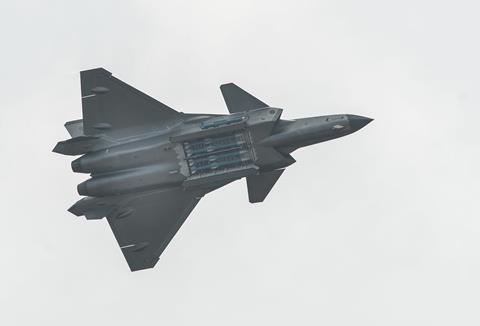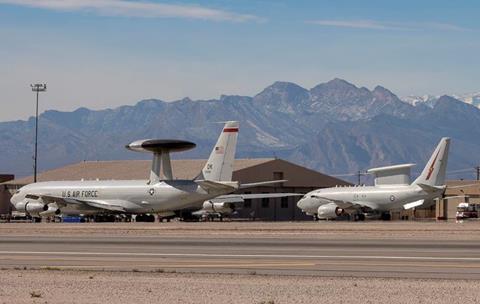Facing down long-range air-to-air missiles, such as the Chinese air force’s PL-15, the US Air Force (USAF) is rethinking its airborne warning and control systems (AWACS).
The service believes its Boeing E-3 Sentry AWACS is vulnerable to being shot down, but it is unsure how to replace it, secretary of the USAF Frank Kendall said during Defense One’s Outlook 2022 virtual conference on 9 December.

The Sentry is a Boeing 707-320 commercial airframe with a rotating radar dome on top. The aircraft is slow-moving, easy-to-spot on radar and the radio waves it emits also give away its position. The USAF has 31 examples of the E-3 in its fleet.
Airborne early warning and control systems like the E-3 are used to detect, identify and track enemy aircraft. That information is then used to coordinate a response by US combat aircraft.
“One of the problems that those types of platforms have is the increasing reach of standoff weapons to go back and try to attack those aircraft,” says Kendall.
For example, the Chinese air force’s PL-15 is believed to have a range greater than 107nm (200km). It is thought that Beijing would have its Chengdu J-20A stealth fighter sneak within shooting distance of vulnerable US aircraft and then use the PL-15 missile to attack.
In particular, the USAF’s airborne warning and control aircraft, airborne ground surveillance aircraft and in-flight refuelling tankers are seen as vulnerable. Destroying those aircraft could blind US forces and make it difficult to move aircraft around the battlefield.
General Charles Brown, chief of staff of the USAF, said in September that the service was considering the Boeing E-7 Wedgetail to replace the E-3 AWACS. He added that he hoped the AWACS mission could eventually be accomplished from space.

The E-7 is based on the Boeing 737NG commercial airliner. It carries a fixed, fin-like Northrop Grumman active electronically scanned array radar antenna atop its fuselage.
The Royal Australian Air Force operates six examples of the Wedgetail, and the South Korean and Turkish air forces operate four each. The UK Royal Air Force has also ordered three.
Kendall says that the Wedgetail is a stopgap, however.
“Something like Wedgetail would give us a much more modern capability and it would give us something to fill a gap temporarily while we figured out what to do longer term,” he says.
Despite interest in space-based AWACS, Kendall notes there are technical limitations to the concept. The USAF is working with the US government intelligence community to determine what sort of mix between space and airborne AWACS might get the service what it needs, Kendall says.































